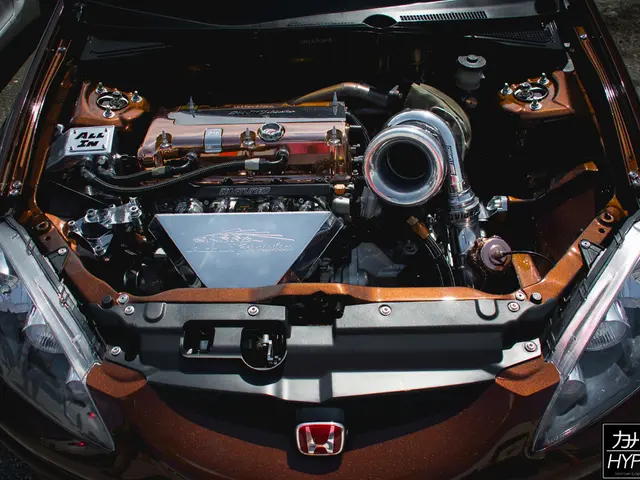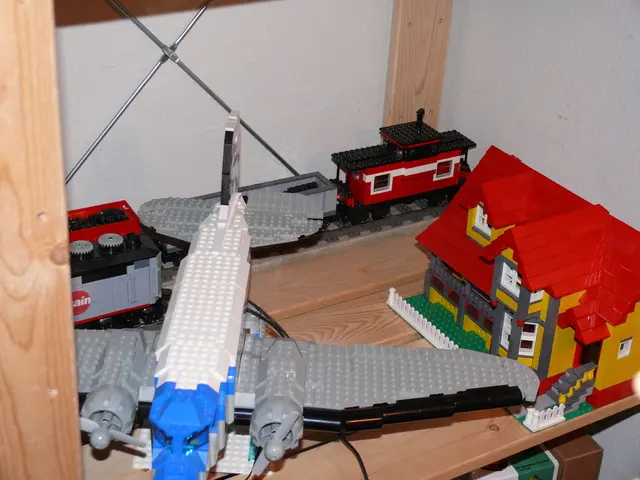Guide on Maintaining, Restoring, and Storing Vinyl Records: Tips and Techniques
Maintaining and Restoring Old Vinyl Records: A Comprehensive Guide
Preserving the quality and integrity of vinyl records is an essential aspect of any collector's routine. Over time, these records can succumb to wear and tear, leading to potential loss of value, both monetary and sentimental. Proper care is paramount to prevent any unnecessary damage, whether you aim to sell these vintage records or simply keep them in pristine condition for future enjoyment.
Cleaning, restoring, and storing vinyl records requires a delicate approach, and our expert team offers a step-by-step guide to help you achieve the best results.
How to Clean Vinyl Records
Cleaning vinyl records is essential in maintaining their top condition. While purchasing a record-cleaning kit offers the most effective results, those seeking DIY methods can spruce up their records using household items. The key to cleaning vinyl records is to remove grease, dirt, and dust to avoid static damage during playback.
Here is a step-by-step guide to cleaning vinyl records:
- Choose the Right Solution: It's crucial to select a record cleaning solution that contains low (or no) isopropyl content to prevent damage to the vinyl's protective layer. Use de-ionized water to avoid static transmissions that could potentially harm the records.
- Remove Static and Dust: Using an anti-static brush and a microfiber cloth, gently sweep away the initial layer of grime, paying attention to follow the direction of the vinyl grooves to avoid undercutting them, which can cause damage to the sound quality and playability of the record.
- Inspect the Record: Upon completion, meticulously inspect the record for problem areas, such as fingerprints, greasy patches, and smudges. Rotate the record at different angles under a strong light to catch any hidden spots lurking in shadows.
- Address Problem Areas: If damaged areas are detected, gently apply the cleaning solution using a low-pressure spray nozzle or by dabbing the liquid onto the vinyl with a microfiber cloth. Stay mindful to follow the vinyl grooves while avoiding adding pressure, as this could snap, warp, or otherwise damage the record. Generally, do not apply cleaning solutions on the record's label to avoid damaging it and devaluing the record.
- Dry the Record: Although it may seem tempting to let the record air-dry to minimize pressure, this could allow dust to resettle on the surface. Instead, use a microfiber cloth or an anti-static brush to gently sweep across the record's surface, keeping in line with the vinyl grooves to remove any wet patches from the vinyl's surface.
- Store the Record Safely: After cleaning, store the newly restored record safely in a protective sleeve somewhere it won't become too hot.
Our website stocks various essential items, such as the classic AM Record Cleaning Set, anti-static vinyl brushes, and the premier Okki Nokki One record cleaning machine, to help you tackle vinyl cleaning tasks effortlessly.
Restoring Vinyl Records
Sometimes, despite best efforts, vinyl records may become marked, scratched, or damaged. Restoration can be the ideal solution, whether the damage was unintentional or due to a low-priced purchase with the intention of reselling.
There are two primary types of damage that can impact vinyl records: warping and scratching. Here are step-by-step guides on restoring both types of damage:
- Warped Records: The best method to repair a warped record is by using a dedicated record flattener. This process involves heating the vinyl to make it malleable, flattening any warped areas, and then allowing it to cool before storing it back safely. For more severe warps, consider using a professional record flattening service or tool, as they can provide more even and controlled heat and pressure.
- Scratched Records: Light scratches on vinyl records can sometimes be repaired using a quality anti-static record cleaning machine. This involves clamping both repair disks to the front and back of the record, filling the cleaning bath with vinyl cleaning fluid, and allowing the brushes to clean each side of the record as they pass through the bath. Once cleaned, gently remove the record from the clamps and leave it on a rack to dry.
Storing Vinyl Records
Storing vinyl records safely goes beyond simply placing them on a living room shelf. Here are some dos and don'ts for proper vinyl storage:
Don'ts:
- Avoid storing vinyl records in attics and garages
- Don't store records flat or stacked
- Don't store records in bright or sunny areas
- Don't pack records tightly
- Don't store records on the floor
Do's:
- Store vinyl records in protective crates and boxes of the right size
- Ensure good ventilation and a stable temperature for storage
- Always use protective exterior sleeves for added protection
- Keep an indexed collection catalog to record valuable vinyl and note damaged vinyl for restoration
- Regularly check on stored items to ensure they aren't warping or being otherwise damaged
Boost the listening experience of your restored vinyl records with our range of compatible accessories, including headphones, branded storage crates, and slipmats. Shop now!
In conclusion, repairing and restoring damaged vinyl records can be a delicate process, but with the right techniques and tools, you can fix warped and scratched records. General tips for handling and storing vinyl records are essential to maintaining optimal sound quality and preserving the records' aesthetic appeal.
- In addition to maintaining the quality of vinyl records, their lifestyle can extend to fashion and beauty, food and drink, home and garden, and entertainment, as these items can complement the ambiance of a vinyl-centric environment.
- For the fashion-conscious vinyl collector, vintage turntables and unique record storage solutions can match the aesthetic appeal of vinyl records.
- After a long day of cooking and listening to vinyl records, unwinding with a specially paired drink can create a nostalgic and enjoyable experience, combining the senses of taste, sight, and sound in a chic, vintage milieu.








